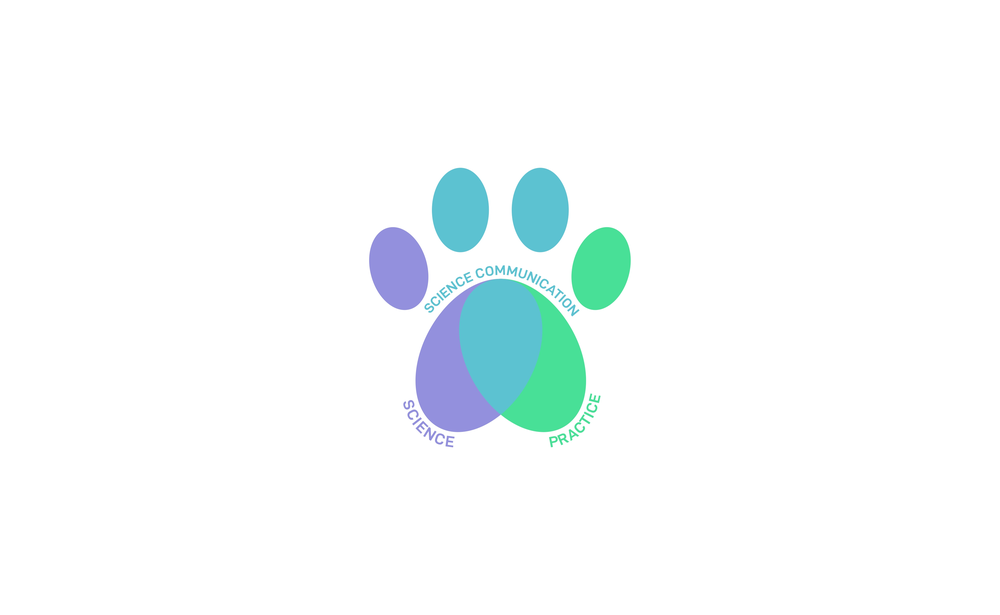Table of Contents:
Understanding the Nature of Cats and Dogs
When aiming for harmony between cats and dogs living in the same household, comprehending their inherent natures is a vital starting point. Both animals hail from different branches of the animal kingdom, leading to distinct behaviours and communication methods. Dogs are naturally pack animals, thriving on social interaction with both humans and other dogs. They communicate through a variety of vocalizations, body postures, and gestures, which can include wagging tails, growling, and barking to convey their emotions and intentions.
In contrast, cats are often more solitary animals, valuing independence and having a more subtle array of communication signals. They tend to use meows specifically to communicate with humans, while relying more on body language and scent marking to interact with other cats. The way a cat holds its tail, ears, and whiskers can all be indicators of her or his internal states.
Understanding these fundamental differences can help pet owners facilitate better interactions between the two species. For instance, a dog's friendly approach may be misinterpreted by a cat as a threat due to differences in social signals. Therefore, interpreting their innate behaviours and adapting the environment accordingly is key to creating a mutual understanding and a peaceful coexistence.
Preparing Your Home for a Multi-Species Household
Embarking on the journey of housing cats and dogs together necessitates careful preparation of your living space. Tailoring your home to cater to their individual needs will set the foundation for a tranquil cohabitation. Start by allocating separate areas where each pet can enjoy privacy and feel secure. These designated zones can be a specific room or a cozy nook with their bed and toys.
When it comes to shared spaces, it's essential to create environments that are neutral and non-threatening. The use of calming pheromone diffusers may aid in soothing both animals. Besides, ensuring each pet has their own set of resources can be instrumental in reducing rivalry. This includes having multiple water stations, separate feeding areas, and individual litter boxes for cats to prevent any unnecessary competition or stress.
- Designate separate sleeping and feeding areas for each pet.
- Establish multiple water stations to ensure easy access for both cats and dogs.
- Provide individual litter boxes placed in quiet, accessible locations for cats.
- Consider utilizing pheromone diffusers to create a calm, shared environment.
Ensuring your pets have ample space will help in maintaining a harmonious balance of territories, essential for pets with different needs and personalities. By thoughtfully preparing your home, you can contribute significantly to promoting a serene and friendly atmosphere between your cats and dogs.
Introducing Dogs to Cats
The initial introduction between a dog and a cat is a crucial moment that can shape their future relationship. It's an art that requires patience and a clear strategy to ensure a smooth transition. When you introduce your pets, it’s advised to control the environment to manage their first impressions. One effective method is to use a barrier like a baby gate that allows both animals to see and smell each other without direct contact.
During these initial encounters, watch for signs of stress or aggression, such as hissing, growling, or fixating on each other. If you notice these behaviours, don't despair. It’s perfectly normal for pets to take time to adjust to one another. It's often recommended to keep these first meetings short and gradually increase interaction time as the animals become more comfortable in each other's presence.
- Prepare a controlled environment with barriers to prevent unwanted physical contact.
- Conduct short, supervised meetings, and gradually increase the duration as appropriate.
- Observe body language and intervene if there are signs of stress or aggression.
- Use positive reinforcement like treats and affection to build positive associations.
Positive reinforcement plays a vital role in these early stages. Reward calm behaviour with treats, praise, or playtime. This will help both the cat and the dog associate these controlled meetings with positive experiences, laying the foundation for a peaceful coexistence.
Creating a Safe and Positive Shared Environment
Once the preliminary introductions have been made, the ongoing aim is to cultivate a shared environment that feels safe and positive for both your dog and your cat. It is crucial to respect their individuality while promoting shared experiences that are enjoyable and stress-free. A cornerstone of this effort is to employ pet-friendly furniture and accessories that can be enjoyed by both species, such as scratch posts that cats can use and which are sturdy enough to not be knocked over by dogs.
Furthermore, enriching the environment with toys that encourage joint play can foster good-natured interactions. However, it is also important to provide plenty of individual enrichment opportunities that allow each pet to express their natural behaviours independently. Strategically placed high shelves and cat trees provide feline members the vertical space they often desire, while a variety of chew toys and interactive feeders can keep dogs mentally and physically stimulated.
- Install sturdy scratch posts and trees for cats to climb without risk of toppling.
- Offer a variety of dog toys for individual play and chewing.
- Introduce shared toys that encourage gentle and cooperative play.
- Ensure cat retreats and high places are available for escape and observation.
Careful attention to the placement of such resources, along with continual observation of how they are used, allows pet owners to make adjustments as needed to maintain a harmonious shared space. By offering a balance of shared and individual activities in a safe environment, you encourage cats and dogs to live together peacefully.
Recognizing and Interpreting Pet Body Language
Clear communication between species is not always easy, but learning to recognize and interpret your pets’ body language is a key component in maintaining harmony. Dogs and cats express their emotions and intentions differently, and understanding these signals can prevent misunderstandings and conflicts in your multi-species household.
Dogs, for example, may display a relaxed posture, with a loose, wagging tail and a playful bow to indicate friendliness. In contrast, a stiff body, raised hackles, or a tucked tail could signal fear or aggression. Cats usually exhibit contentment with a raised tail and purring, but flattened ears, a lashing tail, or an arched back might suggest annoyance or fear.
- Watch for a loose, wagging tail in dogs, indicating friendliness.
- Observe cats’ tails; a raised tail often means contentment, while a lashing tail can show irritation.
- Be mindful of flattened ears in cats, a sign of fear or aggression.
- Note any changes in posture and behaviour that diverge from their usual temperament.
By becoming attuned to these signs and signals, you will be more adept at interpreting your pets' needs, emotions, motivations, and moods. This insight allows you to create an environment where both cats and dogs can express themselves safely, reducing the probability of negative interactions and paving the way for a serene coexistence.
Training Tips for a Dog-Friendly Cat and a Cat-Friendly Dog
Training both cats and dogs to live together harmoniously may require tailored approaches that consider the learning styles and motivations of each species. With dogs, consistent training and positive reinforcement can build a reliable foundation for good behaviour around cats. Basic signals like 'sit', 'stay', and 'leave it' are invaluable in managing your dog's actions.
Cats may not respond to training in the same way dogs do, but they can learn to associate dogs with positive outcomes. Using treats to reward calm behaviour in the presence of a dog, for example, can foster a sense of safety and acceptance in your cat. Making use of clicker training, a method that uses a sound to mark desired behaviours, can also be effective for both cats and dogs.
- Employ positive reinforcement to reward dogs for calm behaviour around cats.
- Train dogs with commands that help manage their impulses, ensuring they respect the cat’s space.
- Use treats to build positive associations for cats when in proximity to dogs.
- Consider clicker training for both species to mark and reward desirable interactions.
Remember, training takes time and patience. Each pet will learn at their own pace, and it's important to celebrate small victories along the way. With persistence and consistent reinforcement of positive interactions, cats and dogs can learn to not only tolerate but also appreciate and enjoy each other's company.
Managing Resources to Avoid Conflict
In a household with dogs and cats, effective resource management is essential to prevent competition that could lead to conflict. Both animals have fundamental needs for food, water, and play, and ensuring these needs are met separately can mitigate territorial disputes.
Dogs are often opportunistic eaters and may attempt to eat cat food, which is not suitable for their dietary requirements and can cause health issues. Conversely, cats should not have access to dog food as it lacks the necessary nutrients they require. To prevent these issues, feed pets at different times or in separate rooms if possible to avoid any guarding or aggressive behaviors.
- Provide distinct feeding areas for cats and dogs to prevent food aggression.
- Offer separate water bowls to ensure each pet has uninterrupted access to fresh water.
- Equip play areas with species-specific toys to cater to their unique play styles.
- Allocate individual resting spaces where each animal can feel secure and unthreatened.
Integrating these management techniques into daily routines will promote a peaceful environment where your cats and dogs can coexist without the need for competition over vital resources.
Dealing with Common Challenges in Dog-Cat Relationships
Even with the best preparation and training, challenges may arise in dog-cat relationships. Recognizing common issues early on and addressing them effectively is key to fostering harmony. One frequent challenge is the chase instinct; many dogs have a natural impulse to chase smaller animals, which can lead to stress for both parties.
To manage this, create a distraction-free environment when introducing these pets to one another. Utilize toys or treats to divert the dog's attention from the cat, reinforcing non-chasing behaviour. Additionally, ensure the cat has escape routes and high perches, out of reach of the dog, to retreat to if feeling threatened or anxious.
- Redirect the dog's chase behaviour with engaging toys or treats.
- Provide the cat with perches and safe zones to escape unwelcome attention.
- Monitor play sessions closely to ensure they remain calm and controlled.
- Be proactive in addressing signs of agitation or discomfort in either pet.
By remaining vigilant and proactive in managing these common challenges, you can help facilitate a more comfortable and trusting relationship between your cat and dog.
Maintaining Long-Term Peace Between Your Pets
Sustaining a peaceful relationship between cats and dogs in the long run involves commitment and ongoing effort. Establishing and sticking to a daily routine can provide both animals with a sense of predictability and security, which is conducive to a calm household.
It is also important to regularly assess the dynamics of their relationship and to continue reinforcing positive interactions. Consistent socialization practices and revisiting training exercises can help keep their coexistence positive: refreshing signals for dogs and reassurance techniques for cats can be beneficial. Keeping an eye out for any health issues is also crucial, as a pet in discomfort may exhibit behaviour changes that could affect the household harmony.
- Adhere to a consistent daily routine to instil a sense of security.
- Regularly reinforce positive interactions with praise and treats.
- Continuously socialize and train both cats and dogs to maintain good behaviour.
- Monitor health closely to preempt any discomfort affecting behaviour.
By meticulously maintaining these practices, you can greatly enhance the likelihood of long-term peace and enjoyment between your pet companions.
When to Seek Help from a Professional
Despite best efforts, there may come a time when expert intervention is required to address the interspecies dynamics within your home. Recognising when to seek help from a professional is essential for the well-being of both your dog and cat. If persistent aggressive behaviour, extreme fear, or significant stress-related symptoms are observed, it may be time to consult an expert in animal behaviour.
A professional can offer in-depth analysis and tailored strategies to address the individual needs of your pets. They can facilitate controlled interactions under guidance, which is particularly beneficial if previous introduction attempts have been unsuccessful. These professionals have the experience to identify subtle cues that may be contributing to tension and can provide you with the tools to create a more harmonious environment.
- Contact a professional if aggressive behaviour or extreme stress is persistent.
- Seek help for guidance with controlled, supervised interactions.
- Utilise the expertise of professionals to understand subtle behavioural cues.
- Implement professional strategies to improve the household dynamic.
Involving a professional is a proactive step towards ensuring the health and happiness of your pets, helping to build a foundation for lasting peace.
FAQ: Fostering a Peaceful Home for Dogs and Cats
How can I prepare my home for both a dog and a cat?
Prepare your home by providing separate zones for each pet to retreat, creating neutral shared spaces, and ensuring ample resources like individual feeding and watering areas to prevent rivalry.
What is the best way to introduce a dog to a cat?
The best way to introduce a dog to a cat is through controlled, gradual introductions using barriers like baby gates, supervising interactions, and using positive reinforcement to build a peaceful relationship.
How can I recognize signs of stress or aggression in my pets?
Recognize stress or aggression by observing your pets’ body language. Signs include hissing or flattened ears in cats and raised hackles or avoidance in dogs, implying discomfort or distaste for interaction.
What strategies can help promote a good relationship between a dog and cat?
Promote a good relationship by providing both shared and individual enrichment activities, encouraging non-chasing behaviour in dogs, and offering high perches for cats to observe dogs safely and comfortably.
When should I consider involving a professional?
Consider involving a professional if you observe persistent aggressive behaviour, extreme fear, or significant stress-related symptoms that aren't alleviated by your efforts at home.





